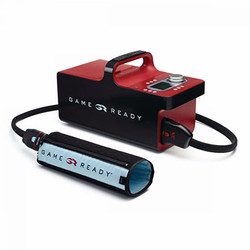Using Physical Therapy to Treat Recurrent Injuries
Recurrent Injuries can significantly diminish a patient's quality of life, manifesting in chronic pain, restricted movement, and difficulties in daily and work-related tasks. The persistent nature of these injuries often leads to increased medical costs and longer recovery periods, creating a substantial burden on individuals. These impacts are particularly pronounced in athletes, children, and workers, who face unique risks due to the physical demands of their activities. Understanding these risks and implementing targeted preventive strategies are crucial. As a solution, physical therapy emerges as a vital component in the treatment of recurrent injuries, offering personalized rehabilitation plans that address the underlying causes and help restore function and ultimately preventing future occurrences.
Impact of Recurrent Injuries
Recurrent injuries can profoundly affect a patient’s quality of life and overall well-being. Understanding the full scope of these impacts underscores the importance of effective treatment and prevention strategies.
Increased Chronic Pain
One of the most common consequences of recurrent injuries is the development of chronic pain. Unlike acute pain, which serves as a warning signal for immediate injury, chronic pain persists over time and can become a debilitating condition. This persistent pain often leads to a reduced quality of life, affecting sleep patterns, mood, and the ability to perform daily activities.
Loss of Movement and Range of Motion
Recurrent injuries can severely restrict movement and reduce the range of motion in the affected area. This limitation can result from scar tissue formation, joint stiffness, or muscle weakness. For instance, repeated ankle sprains can lead to chronic instability, making it difficult to perform even simple tasks such as walking or climbing stairs.
Difficulty Performing Daily Activities and Job Tasks
The limitations imposed by recurrent injuries can make it challenging for patients to carry out their daily activities and job-related tasks. This can range from simple household chores to more demanding physical activities required in certain professions. For example, a recurrent shoulder injury might make it difficult for a construction worker to lift heavy objects, directly affecting their ability to work and earn a livelihood.
Increased Medical Costs
Recurrent injuries often lead to increased medical costs due to the need for ongoing treatments, therapies, and possibly surgeries. These costs can accumulate quickly, especially if the patient requires frequent visits to healthcare providers, physical therapy sessions, or advanced medical interventions. Additionally, indirect costs such as lost wages due to missed work further exacerbate the financial burden.
Longer Recovery Times
Each recurrence of an injury typically extends the recovery period. The body’s healing process can be compromised by repeated trauma, making it more difficult to return to full function. For example, a recurrent knee injury may take months or even years to fully heal, depending on the severity and frequency of the injuries.
Psychological Impact
The psychological impact of recurrent injuries should not be underestimated. Persistent pain and physical limitations can lead to feelings of frustration, anxiety, and depression. Patients might develop a fear of re-injury, which can reduce their confidence and willingness to engage in physical activities, further hindering their recovery and overall mental health.
Risk of Complications
Recurrent injuries increase the risk of complications such as infections (in the case of surgical interventions), chronic inflammation, and the development of secondary conditions like osteoarthritis. For example, repeated injuries to a joint can accelerate the wear and tear of cartilage, leading to degenerative joint disease.
Groups at Risk for Recurrent Injuries
Understanding the demographics and underlying causes of recurrent injuries is crucial for developing effective prevention and treatment strategies. Two of the most vulnerable groups are athletes and children, but certain work-related injuries also pose significant risks.
Athletes (Both Professional and Amateur)
Athletes are particularly prone to recurrent injuries due to the high physical demands of their sports and activities. The repetitive nature of training and competition can lead to overuse injuries and acute injuries that are susceptible to recurrence.
- Types of Injuries: Athletes frequently suffer from muscle sprains, ligament strains, tendonitis, and concussions. The intense physical activity that athletes experience can cause these injuries to reoccur, especially if the initial injury was not fully rehabilitated.
- Statistics: Studies indicate that injuries such as muscle sprains and strains have a 10.5% increased risk of recurrence. Additionally, specific sports are associated with higher risks of certain injuries. For example, basketball and soccer players are more likely to experience recurrent ankle sprains, while runners are more prone to recurrent knee injuries (Reference: British Journal of Sports Medicine, Treatment and prevention of acute and recurrent ankle sprain: an overview of systematic reviews with meta-analysis).
- Contributing Factors: Factors such as inadequate warm-up, poor technique, overtraining, and insufficient rest periods contribute to the high incidence of recurrent injuries among athletes.
Children
Children are also at a high risk for recurrent injuries due to their active lifestyles and developing bodies. They engage in various physical activities that can lead to injuries.
- Types of Injuries: Common injuries in children include sprains, fractures, and concussions. These injuries are often associated with playground activities, sports, and recreational activities.
- Statistics: Children’s developing musculoskeletal systems can make them more susceptible to recurrent injuries, especially if initial injuries are not properly treated or if they resume activities too soon (Reference: BMC, Sports injuries patterns in children and adolescents according to their sports participation level, age and maturation).
- Contributing Factors: Factors such as lack of proper supervision, inadequate safety equipment, and a tendency to engage in risky behaviors can increase the likelihood of recurrent injuries in children.
Work-Related Injuries
Certain work-related injuries also pose a high risk for recurrence, particularly in jobs that involve repetitive motions or physical strain.
- Types of Injuries: Common work-related injuries include neck and back injuries, carpal tunnel syndrome, and other repetitive strain injuries. Jobs that require lifting, repetitive motions, or prolonged periods of sitting or standing can predispose workers to these types of injuries.
- Statistics: Employees in occupations such as construction, manufacturing, and office work are at a higher risk for recurrent injuries. For instance, workers who perform repetitive tasks, such as typing or assembly line work, are more susceptible to developing and redeveloping carpal tunnel syndrome (Reference: U.S Bureau of Labor Statistics, Injuries, Illness, and Fatalities).
- Contributing Factors: Poor ergonomics, inadequate breaks, and insufficient physical conditioning can contribute to the high incidence of recurrent injuries in the workplace.
Preventive Strategies for High-Risk Groups
Given the high risk of recurrent injuries in these groups, it is essential to implement comprehensive and effective preventive strategies. Tailoring these strategies to the specific needs of athletes, children, and workers can significantly reduce the incidence of recurrent injuries and promote overall health and safety.
Athletes
Athletes are particularly susceptible to recurrent injuries due to the physical demands of their sports. To mitigate these risks, several preventive measures can be implemented:
- Proper Warm-Up and Cool-Down Routines: Ensuring athletes engage in thorough warm-up exercises before activity and cool-down routines afterward helps prepare the body for physical exertion and aids in recovery. Dynamic stretching before workouts and static stretching afterward can enhance flexibility and reduce injury risk.
- Adequate Rest Periods: Allowing sufficient time for recovery between training sessions is crucial. Overtraining can lead to fatigue and increased injury risk. Coaches and trainers should design training schedules that include rest days and lighter training periods to allow for proper recovery.
- Protective Equipment: Using appropriate protective gear, such as helmets, mouthguards, and joint braces, can prevent injuries. Equipment should be sport-specific and properly fitted to ensure maximum protection.
- Regular Physical Assessments: Conducting routine physical evaluations can help identify potential risk factors, such as muscle imbalances or poor biomechanics. Early detection allows for corrective measures, such as targeted strengthening or flexibility exercises, to be implemented.
- Education on Injury Prevention: Educating athletes on the importance of proper technique, listening to their bodies, and recognizing the early signs of injury can empower them to take proactive steps to prevent recurrences.
Children
Children are active and often engage in various physical activities, making them vulnerable to injuries. Effective preventive strategies include:
- Supervision During Physical Activities: Ensuring that children are adequately supervised during play and sports can help prevent risky behaviors that lead to injuries. Supervising adults can intervene quickly if unsafe practices are observed.
- Use of Proper Safety Equipment: Providing and enforcing the use of safety equipment, such as helmets, knee pads, and wrist guards, can significantly reduce injury risk. Equipment should be age-appropriate and regularly checked for wear and tear.
- Education on Safe Play Practices: Teaching children about safe play practices, including the importance of following rules and using equipment correctly, can help prevent injuries. Encouraging them to communicate about any pain or discomfort they experience can lead to early intervention.
- Structured Physical Activities: Organizing structured physical activities with clear guidelines and safety measures can help manage the risk of injury. Activities should be age-appropriate and designed to develop physical skills progressively.
- Promoting Physical Literacy: Physical literacy programs that teach fundamental movement skills, such as running, jumping, and throwing, can improve coordination and body awareness, reducing the risk of injury.
Workers
Workplace injuries, particularly those involving repetitive strain or heavy lifting, can lead to recurrent issues. Preventive strategies include:
- Improving Workplace Ergonomics: Adjusting workstations to promote proper posture and reduce strain can prevent injuries. Ergonomic chairs, adjustable desks, and supportive footwear can make a significant difference.
- Encouraging Regular Breaks: Implementing regular breaks throughout the workday can prevent repetitive strain injuries. Short, frequent breaks allow workers to stretch and relax muscles, reducing fatigue and injury risk.
- Training on Proper Lifting Techniques: Providing training on proper lifting techniques and the use of lifting aids can prevent back and shoulder injuries. Workers should be taught to lift with their legs, keep loads close to their bodies, and avoid twisting motions.
- Wellness Programs: Offering wellness programs that include exercises for strength, flexibility, and overall fitness can help prevent injuries. Programs can be tailored to the specific needs of different job roles and may include on-site physical therapy sessions or fitness classes.
- Monitoring and Early Intervention: Regular health screenings and early intervention programs can help identify potential issues before they become serious injuries. Encouraging workers to report any discomfort or early signs of injury can lead to timely treatment and prevent recurrences.
The Role of Physical Therapy in Managing Recurrent Injuries
Once a patient experiences a recurrence of their injury, physical therapy becomes the most effective route to achieve pain-free function and prevent future issues. Physical therapists employ a variety of modalities tailored to reduce symptoms, restore function, and address the underlying causes of recurrent injuries. Here's a closer look at how physical therapy addresses some common recurrent injuries:
Cold Compression Therapy for Sprains and Strains
For injuries such as sprains and strains in areas like the lower back and ankles, the risk of recurrence is high. Initial injuries often result in severe pain, swelling, and reduced range of motion. Cold-compression devices are highly beneficial in these cases for several reasons:
- Analgesic Effect: The cold temperature provides a numbing effect, reducing pain at the injury site.
 Pneumatic Compression: This helps reduce local swelling by promoting better blood flow and lymphatic drainage. Reduced swelling, in turn, improves mobility and range of motion.
Pneumatic Compression: This helps reduce local swelling by promoting better blood flow and lymphatic drainage. Reduced swelling, in turn, improves mobility and range of motion.- Targeted Treatment: These devices come with body part-specific wraps that precisely target the injured area, ensuring effective and localized treatment.
In addition to cold compression, physical therapists might incorporate manual therapy, electrotherapy, and specific strengthening and flexibility exercises to promote recovery and prevent future strains and sprains.
Treating Recurrent Carpal Tunnel Syndrome
Recurrent carpal tunnel syndrome (CTS) can significantly impact hand function and quality of life. Physical therapy can often prevent the need for surgical intervention through a combination of treatments:
- Splinting: Wearing a splint, particularly at night, can keep the wrist in a neutral position, reducing pressure on the median nerve.
- Therapeutic Stretches and Exercises: Stretching the wrist and forearm muscles can relieve tension, while exercises strengthen the muscles around the wrist, improving support and reducing the likelihood of recurrence.
- Low-Level Laser Therapy (LLLT): A study published in Lasers in Medical Science highlighted LLLT as an effective non-invasive treatment for reducing pain in mild-to-moderate cases of recurrent CTS. LLLT helps reduce inflammation and promotes tissue healing at a cellular level.
- Ergonomic Modifications: Physical therapists can assess the patient's work and home environments to recommend ergonomic adjustments that minimize strain on the wrist, such as proper keyboard positioning and the use of ergonomic tools.
Rehabilitation for Recurrent Knee Injuries
Knee injuries, particularly those involving the ligaments and cartilage, are prone to recurrence. Physical therapy for recurrent knee injuries typically includes:
- Strengthening Exercises: Focusing on the quadriceps, hamstrings, and surrounding musculature to provide better support for the knee joint.
- Balance and Proprioception Training: Enhancing the body's ability to stabilize and control the knee during activities, which is crucial for preventing re-injury.
- Manual Therapy: Techniques such as joint mobilization and soft tissue massage can improve joint function and reduce pain.
- Modalities: Using ultrasound, electrical stimulation, or cryotherapy to reduce pain and inflammation and promote healing.
Managing Recurrent Shoulder Injuries
Shoulder injuries, such as rotator cuff tears and dislocations, can be debilitating and have a high recurrence rate. Physical therapy interventions for shoulder injuries include:
- Range of Motion Exercises: Gentle stretching to maintain or improve shoulder flexibility and shoulder range of motion.
- Strengthening Exercises: Targeting the rotator cuff and scapular stabilizers to enhance shoulder stability.
- Functional Training: Simulating daily activities or sports-specific movements to ensure the shoulder can handle regular use without pain or dysfunction.
- Posture Education: Teaching patients how to maintain proper posture to reduce strain on the shoulder muscles and joints.
Final Thoughts
Recurrent injuries pose a significant risk across various demographics, including athletes, children, and workers, leading to chronic pain, loss of movement, and prolonged recovery times. These injuries severely impact quality of life and overall well-being, incurring substantial medical costs and the risk of complications. Effective prevention and treatment strategies are crucial, such as warm-up routines, protective equipment, and regular assessments for athletes; supervision and safety education for children; and ergonomic improvements and wellness programs for workers. Physical therapy is essential in managing these injuries, utilizing various modalities and rehabilitation exercises to restore function and prevent future issues.
Related Blog Posts:
Harnessing Cold Therapy for Post-Exercise Inflammation Relief
The Synergy of Cryotherapy and Compression: Elevating Recovery and Performance
Understanding Carpal Tunnel Syndrome: Prevention and Treatment
Recent Posts
-
Acupuncture vs. Dry Needling: What’s the Difference?
At first glance, acupuncture and dry needling might seem identical. Both involve inserting thin need …Jun 11th 2025 -
What Is Dry Needling? A Modern Approach to Pain Relief and Muscle Recovery
Chronic muscle pain, tension, and restricted movement can significantly impact your daily life, sign …Jun 11th 2025 -
The Kinetic Chain and Its Importance?
The kinetic chain is a key principle in physical therapy, referring to the way muscles, joints, and …Apr 18th 2025







